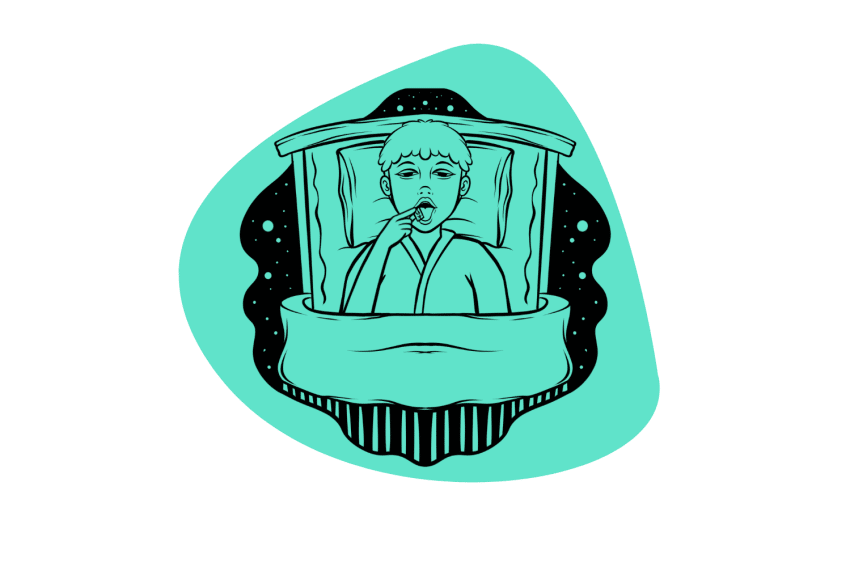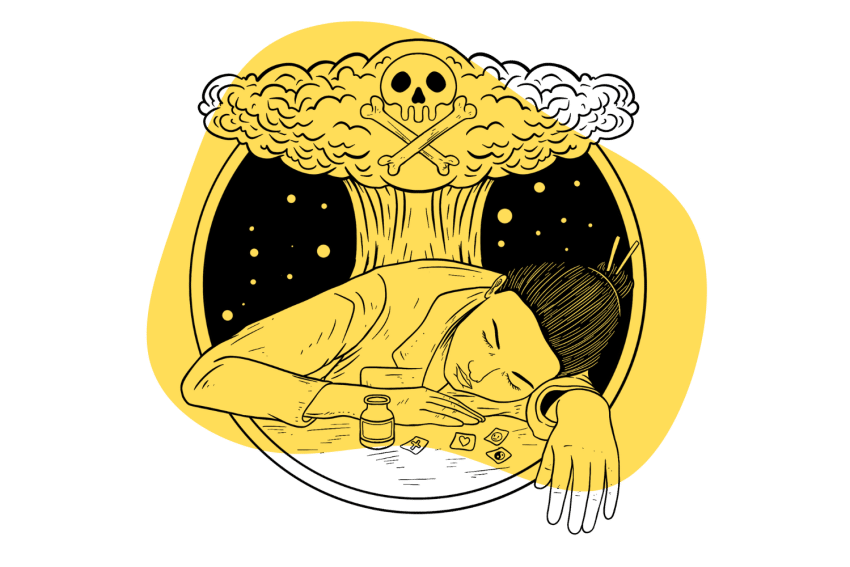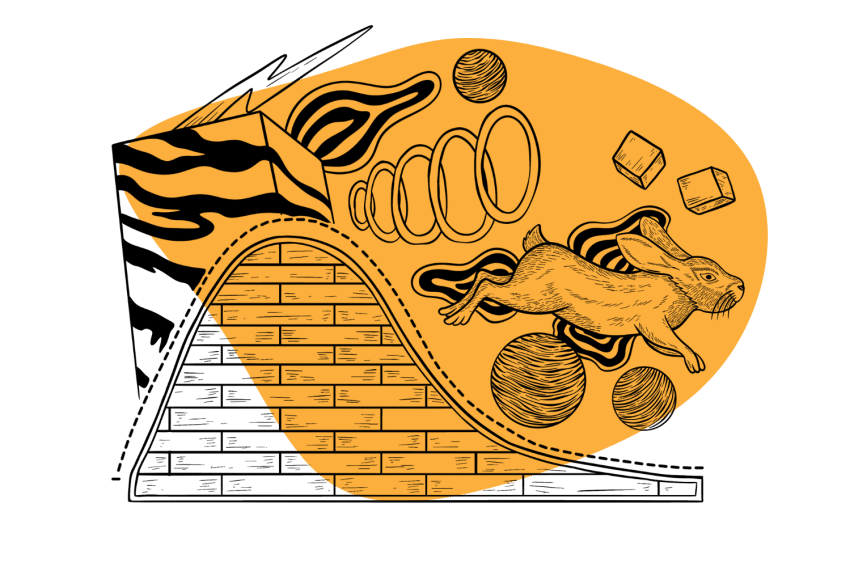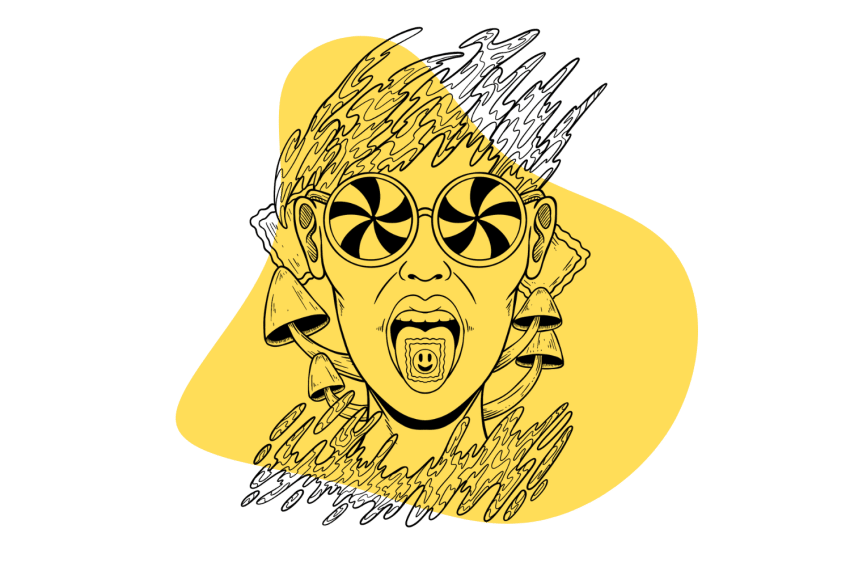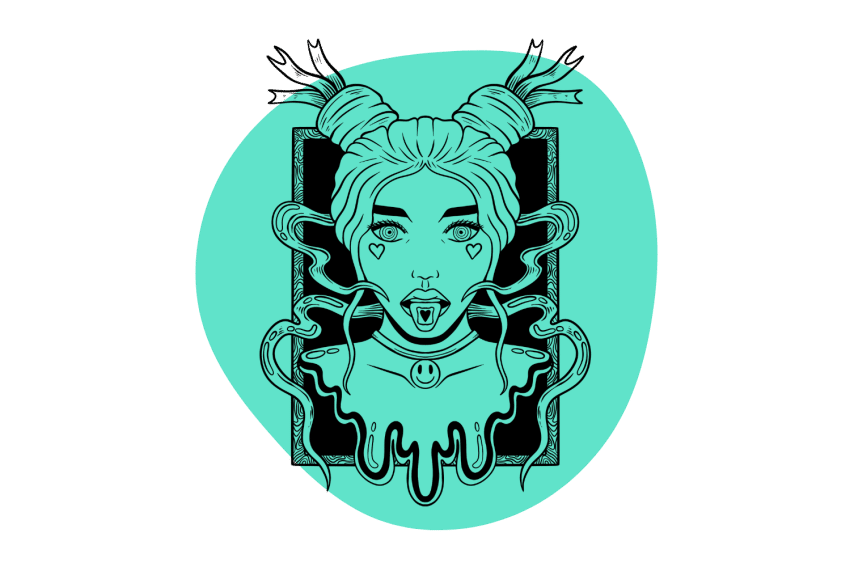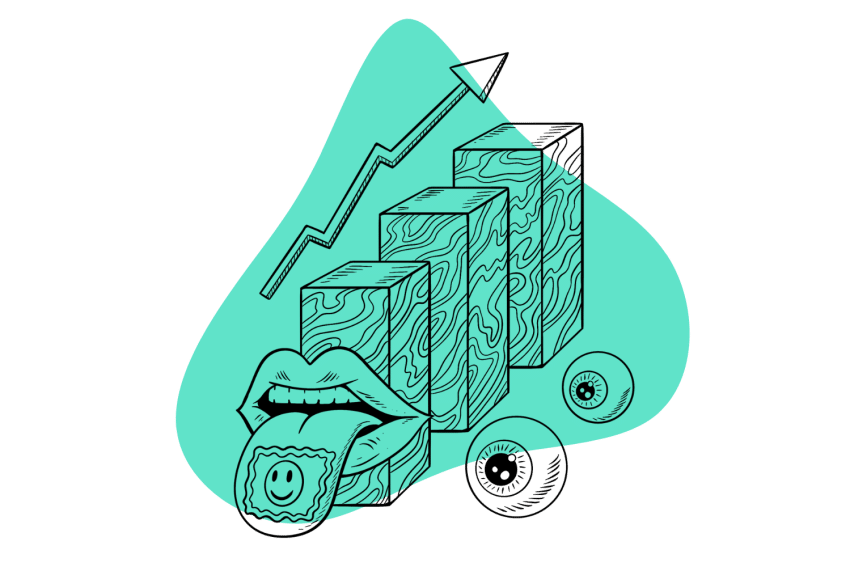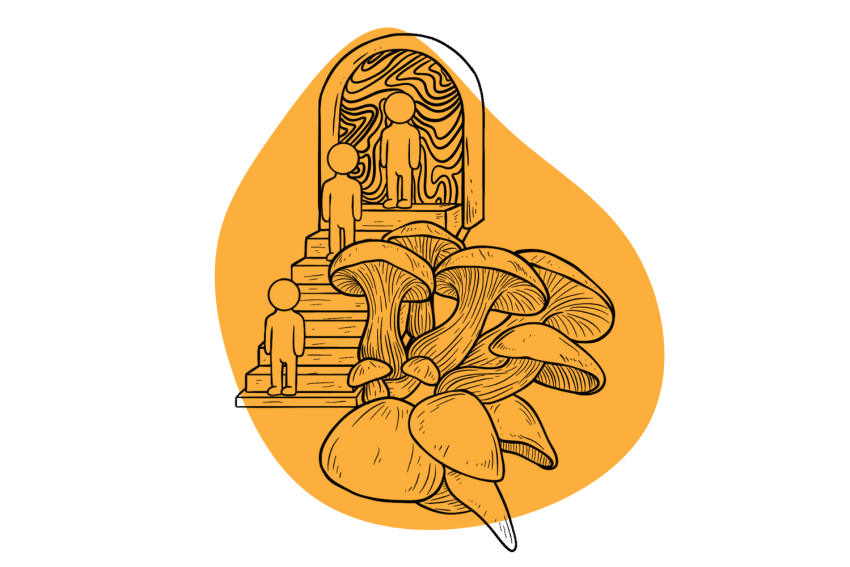7 Common LSD Myths & Misconceptions Debunked
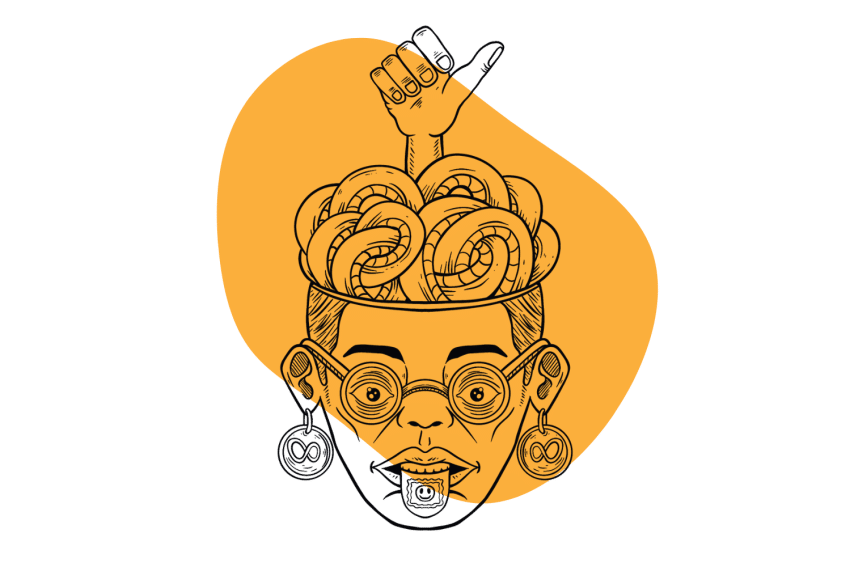
Lysergic acid diethylamide (LSD) has been a source of intrigue, mystery, and myth ever since Swiss chemist Albert Hofmann created it in 1938.
The sole purpose of many of these myths was to dissuade people from ever trying it. Suggestions that LSD is addictive or causes users to go insane or commit suicide aren’t based on fact.
We want to expose some of the most common myths about LSD in an effort to spread the most truthful and valuable information possible.
What Is LSD?
LSD is a semi-synthetic psychedelic drug that was first synthesized in Switzerland in 1938. It has a long and troubled history, especially in the United States.
This compound is credited as a major driver behind the 1960s counterculture and was even used by the CIA in a mind-control research program called MK-Ultra.
LSD is currently illegal throughout America and is listed as a Schedule I substance by the Drug Enforcement Agency (DEA).
Recently, LSD possession has been decriminalized in some areas throughout the United States, including Washington, D.C., and Oregon. It remains illegal in most countries, with some rare exceptions.
Why Is LSD Such a Controversial Topic?
LSD was initially believed to have many medical benefits, and research on its effects and potential uses abounded. Unfortunately, prohibition in the United States began in the mid-to-late 1960s.
Sidney Gottlieb, a researcher with the CIA, procured large amounts of LSD in the early 60s and began large-scale testing on human subjects to determine if mind control was possible. The government feared the Soviet Union and Japan were using psychedelics to brainwash American prisoners of war.
What ensued from this testing was a fear that the drug would fall into the wrong hands — including the hippie counterculture movement, which was fundamentally anti-establishment and anti-government.
In response, the CIA released propaganda that demonized LSD and its users.
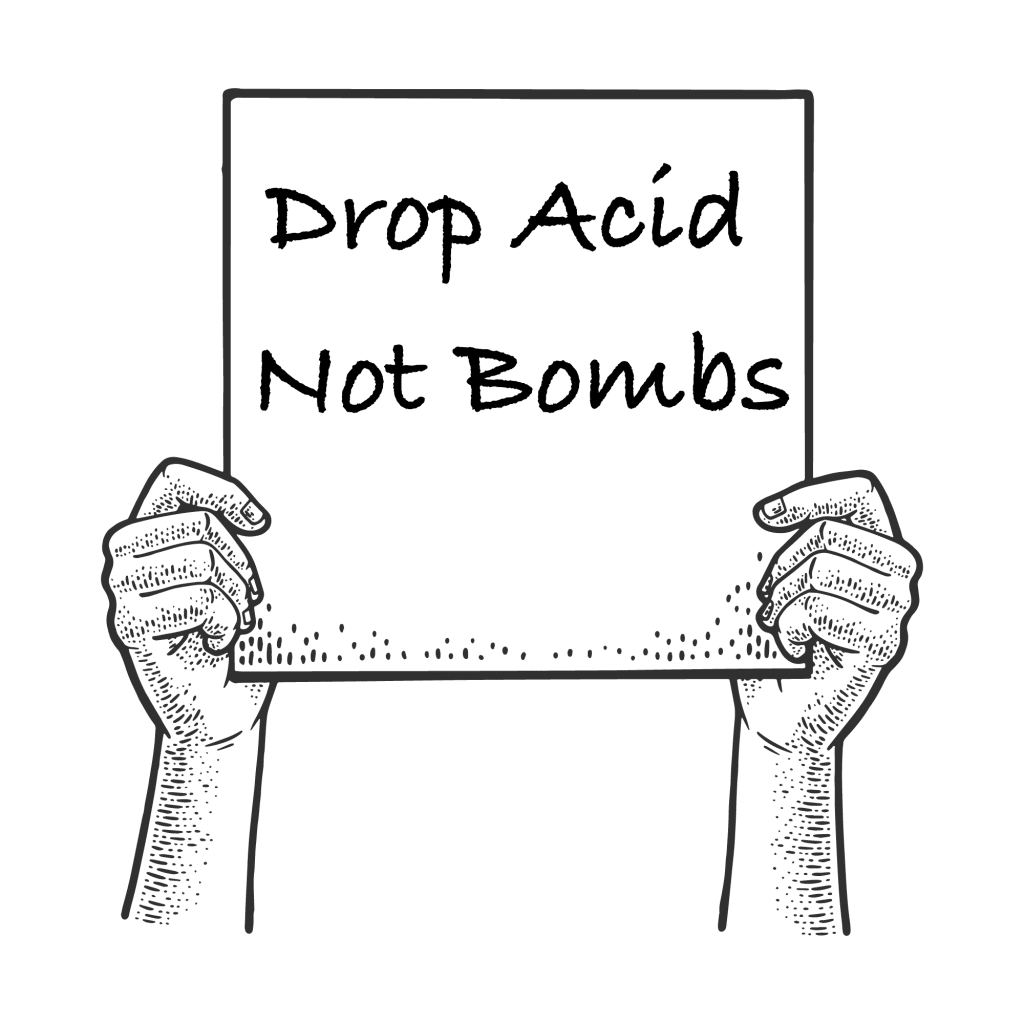
Since this turn of events, LSD has remained controversial and taboo.
However, research has recently started to open up again, and the taboo of this misunderstood psychedelic is starting to see some reversal.
Related: What is psychedelic-assisted psychotherapy?
7 Common Myths & Misconceptions Surrounding LSD
Countless myths still circulate about LSD, whether the rumors started as propaganda or were promulgated by anti-drug campaigns and individuals.
Below are some of the most common myths surrounding LSD and the truth about each rumor.
LSD Myth #1: You Can’t End a Bad Trip
Among the scariest anti-LSD propaganda is the idea of a “bad trip,” which is a very unpleasant and sometimes horrifying experience that can happen when on LSD. The truth is that they’re always possible, even for experienced LSD users, and they’re largely unavoidable.
However, you can do several things to cut the trip short and end the potentially traumatic experience.
Two of the most crucial things to do before you trip are to put yourself in a comfortable and familiar setting and have a good trip sitter present.
A familiar atmosphere will help prevent anxiety or negative thoughts during your trip, and a trip sitter can talk you down, anchor you to reality, and make sure you’re not having a real emergency.
Research shows that these two things alone can often help avoid bad trips [1] and potentially even turn them into positive experiences.
Relaxing music is another good way to reduce tension and stress during your trip.
Even if the above strategies don’t work, users can take a “trip killer,” a drug that can end a psychedelic experience early.
Common trip killers include benzodiazepines like lorazepam and diazepam, antipsychotic medications, and antidepressants like trazodone.
LSD Myth #2: LSD Gets Stored In Your Body & Causes Flashbacks
The concept of a flashback involves the idea that LSD is stored in fat cells or cerebrospinal fluid and can be released randomly later on. Some people believe cracking your back causes a sudden release of LSD into the system — causing a hallucinogenic episode.
This is fundamentally untrue. Research suggests these types of flashbacks don’t occur [2].
LSD’s elimination half-life is just over 3.5 hours [3], which means virtually all of the substance has broken down or exited your body about 24 hours after ingestion. More importantly, LSD is not fat-soluble, so it cannot be stored in fat cells or your spinal cord.
With that being said, “flashbacks” are possible a long time after an LSD trip, but they aren’t how most people picture them. You won’t hallucinate or have intense anxiety as you recall your psychedelic experience.
Instead, you may vividly remember your state of mind during your trip, realizations you had while tripping, or feelings and emotions the LSD elicited.
Additionally, there’s a condition known as hallucinogen-persisting perception disorder (HPPD), which involves the psychoactive effects remaining long after the drug has been eliminated. This condition is exceedingly rare but can happen to predisposed people.
Also see: What Are the Long-Term Effects of LSD?
LSD Myth #3: LSD Will Make You Go Crazy
People often tell stories of LSD users who lost their minds.
It’s true that people predisposed to or diagnosed with psychological disorders like schizophrenia can be “triggered” by psychedelics [4], but there is no evidence that LSD will make otherwise healthy people “go crazy.”
LSD is considered low-risk for most people.
LSD Myth #4: LSD Causes Brain Damage
One myth possibly attributed to anti-drug propaganda from the 1960s and 1970s is that LSD causes brain damage and permanently alters the user’s personality. Stories say some users become seemingly different people after LSD, and there’s large-scale brain damage in frequent users.
None of these claims have ever been substantiated.
Some LSD users do report feeling different or as if they’re existing in an altered state of mind — usually in a positive way — following an LSD trip [5]. However, plenty of research suggests that the effects of LSD, while profound, are entirely transient [6]. Other studies have found no lasting changes to personality or brain chemistry after use [5].
LSD Myth #5: LSD Is a Natural Drug
Some people, including many LSD users and advocates, insist that LSD is a natural drug. LSD doesn’t exist in nature; it’s semi-synthetic, as it’s derived from ergotamine, a natural alkaloid.
LSD must be synthesized in a lab. It can be made from synthetic materials or natural ergot alkaloids — but made in a lab either way.
LSD Myth #6: LSD is the Most Powerful Psychedelic
LSD is sometimes demonized because of its potency, with anti-drug individuals claiming it’s the most powerful and, therefore, the most dangerous psychedelic.
LSD is exceptionally potent compared to other psychedelics, providing a significant psychoactive experience in doses of 50-150 micrograms — well under 1 milligram.
For comparison, other psychedelics like magic mushrooms and mescaline are typically psychoactive in quantities of several milligrams. Many psychedelics must be taken in volumes hundreds of times that of LSD for a comparable psychoactive experience.
However, while LSD is close to being the most potent psychedelic, other lysergamide derivatives — like lysergic acid 2,4-dimethylazetidide (LSZ) — are stronger.
Additionally, N,N-dimethyltryptamine, and 5-MeO-DMT (DMT) are less psychoactive in equal doses but produce a much more intense psychedelic experience than LSD if taken in more significant volumes.
There are also other substances, such as DOX compounds and NBOMes, that are psychedelic in doses well below 1 mg as well.
LSD Myth #7: LSD Can “Save the World”
While most of the myths about LSD come from anti-drug campaigns and propaganda, the idea that LSD can “save the world” and transform all humans into loving, caring, and altruistic beings comes from LSD proponents.
This idea is false and potentially dangerous — some people believe that dumping LSD into a public water supply can change humanity for the better.
LSD can have a profoundly positive effect on users, sometimes changing negative or addictive tendencies, improving one’s outlook on life, and enhancing the perceived connection to the world and the people around them.
However, LSD can be detrimental for some people with mental disorders or a family history of psychological issues. Additionally, LSD can affect the way users think negatively as well. Going into an LSD experience with positive intentions and expectations plays a significant role in how the user reacts during and after the trip [7]. Simply dosing people unknowingly isn’t going to make them think less selfishly or become less egotistical.
Key Takeaways: LSD Myths & Facts
Lysergic acid diethylamide (LSD) has been a source of confusion and rumors since it was illegalized in the 1960s. The compound was demonized by the CIA and other government bodies in response to the anti-government hippie movement that supported psychedelic use. It was also banned and painted in a negative light in an effort to maintain control of a substance the CIA believed could be used for mind control.
Unfortunately, misinformation and myths have spread throughout the drug-using and anti-drug communities. Honest and transparent information is crucial for a better understanding of LSD and other psychedelics and for dispelling the common myths and rumors mentioned above.
While LSD is not the solution to humankind’s largest problems, it’s considered a low-risk substance and has provided countless users with a positively profound psychedelic experience.
References
- Fuentes, J. J., Fonseca, F., Elices, M., Farré, M., & Torrens, M. (2020). Therapeutic use of LSD in psychiatry: a systematic review of randomized controlled clinical trials. Frontiers in psychiatry, 10, 943.
- Gasser, P., Holstein, D., Michel, Y., Doblin, R., Yazar-Klosinski, B., Passie, T., & Brenneisen, R. (2014). Safety and efficacy of lysergic acid diethylamide-assisted psychotherapy for anxiety associated with life-threatening diseases. The Journal of nervous and mental disease, 202(7), 513.
- Dolder, P. C., Schmid, Y., Steuer, A. E., Kraemer, T., Rentsch, K. M., Hammann, F., & Liechti, M. E. (2017). Pharmacokinetics and pharmacodynamics of lysergic acid diethylamide in healthy subjects. Clinical pharmacokinetics, 56(10), 1219-1230.
- Vardy, M. M., & Kay, S. R. (1983). LSD psychosis or LSD-induced Schizophrenia?: A multimethod inquiry. Archives of General Psychiatry, 40(8), 877-883.
- Schmid, Y., & Liechti, M. E. (2018). Long-lasting subjective effects of LSD in normal subjects. Psychopharmacology, 235(2), 535-545.
- Liechti, M. E. (2017). Modern clinical research on LSD. Neuropsychopharmacology, 42(11), 2114-2127.
- Haijen, E. C., Kaelen, M., Roseman, L., Timmermann, C., Kettner, H., Russ, S., … & Carhart-Harris, R. L. (2018). Predicting responses to psychedelics: a prospective study. Frontiers in pharmacology, 9, 897.


